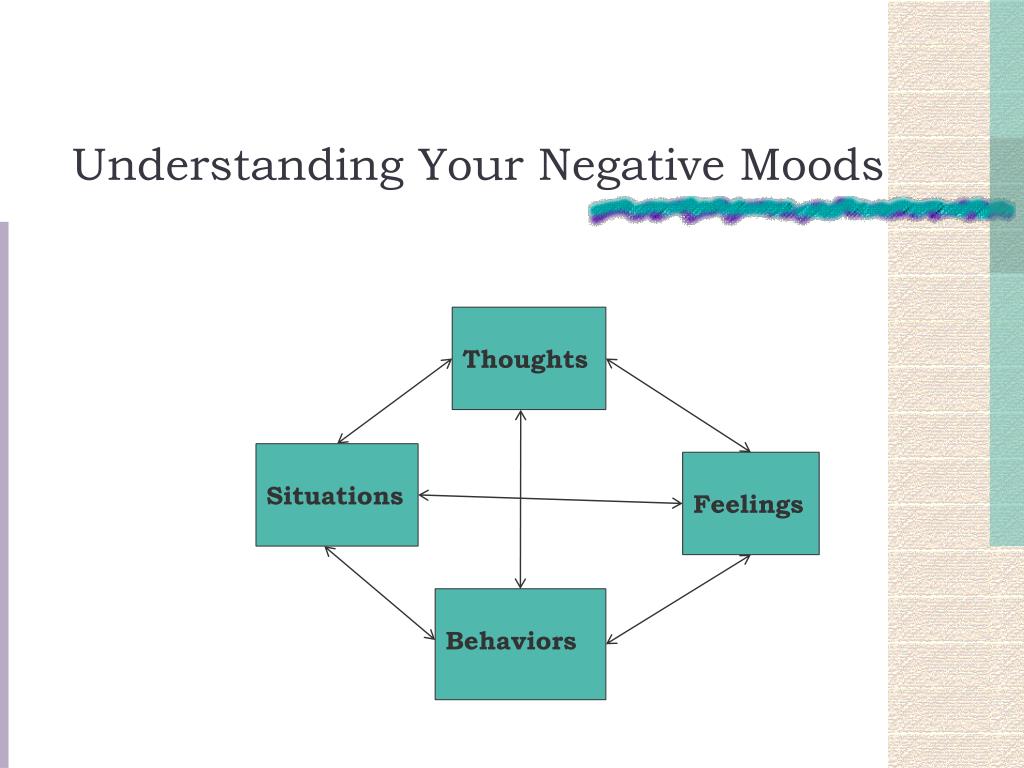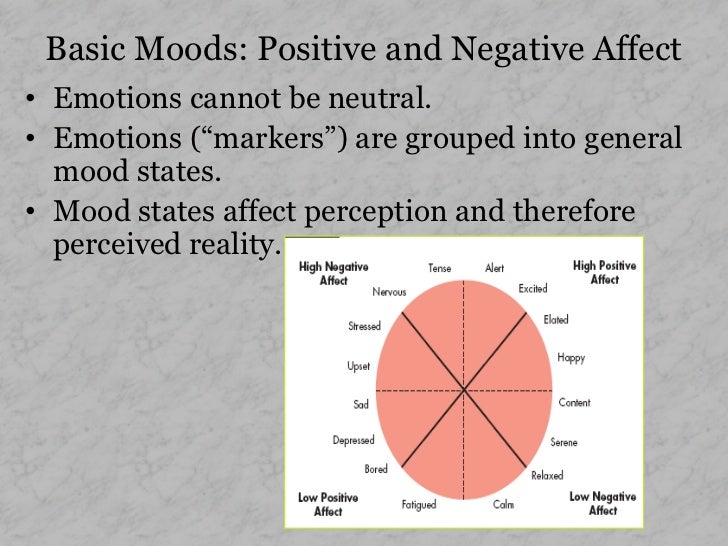

It’s a paradox that we all must understand: It is by turning towards negative emotions that we find relief from them – not by turning away.
EXAMPLES OF NEGATIVE MOODS HOW TO
We can bring a caring open attention towards the wounded parts of ourselves and make wise choices about how to respond to ourselves and to life. Instead of ‘turning away’ from pain in avoidance we can learn to gently ‘turn towards’ what we’re experiencing. Through mindfulness you can learn to turn your negative emotions into your greatest teachers and sources of strength. Avoidance creates suffering and keeps us from living fully this miraculous and precious life that we have. We may begin a mental struggle with the pain trying to mentally talk our way out of it, or we distract ourselves with activities or drown it out with food or drink or something stronger.Īll these ways of avoiding pain only perpetuate it in the long run. In these trying times we often want to escape the pain, drown it out or push it away somehow. There are times when we feel anger, anxiety, grief, embarrassment, stress, remorse or other negative emotions. If you want to know more about commonly confused words, definitions, common mistakes, and differences between US and UK spellings, make sure to check out some of our other language articles with explanations, examples, and quizzes.There are moments in life that are hard, painful, scary and difficult to endure. With “be,” you’ll also need to change the form of the verb. Most sentences with verbs in the imperative mood can be made indicative by adding the second-person pronoun. The exception is the verb “be,” which takes the infinitive form “be” in the imperative but takes the form “are” in the indicative. Imperative statements are used to express a demand or make a suggestion, while indicative statements are used to express a fact.įor most verbs, the imperative form (e.g., “run”) is identical to the second-person present indicative form (e.g., “you run”).
EXAMPLES OF NEGATIVE MOODS FOR FREE
Use the best grammar checker available to check for common mistakes in your text.įix mistakes for free Imperative vs. Examples: Imperative mood and reflexive pronouns

All other pronouns use the object form (e.g., “me,” “us,” “him,” “her”). Imperative mood and reflexive pronounsīecause the imperative mood typically uses the implied second-person pronoun (“you”), the only reflexive pronouns used in imperative sentences are “yourself” (singular) and “yourselves” (plural). Examples: Negative first-person plural imperatives Let’s not eat here again. Negative first-person plural imperatives are formed by adding the adverb “not” after “let us” or “let’s” and before the imperative verb. Examples: First-person plural imperatives Let’s dance! They’re expressed using the imperative verb along with a combination of the verb “let” and the first-person plural object pronoun “us” (i.e., “let’s”). Examples: Negative imperative statements Do not enter!ĭon’t answer the phone! First-person plural imperativesįirst-person plural imperatives are used to suggest that both the speaker and the addressee do something.

Negative constructions in the imperative mood are formed by adding “do not” (or the contracted form “don’t”) before the imperative verb.


 0 kommentar(er)
0 kommentar(er)
